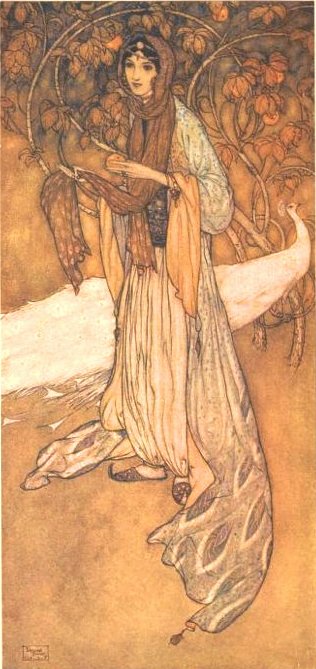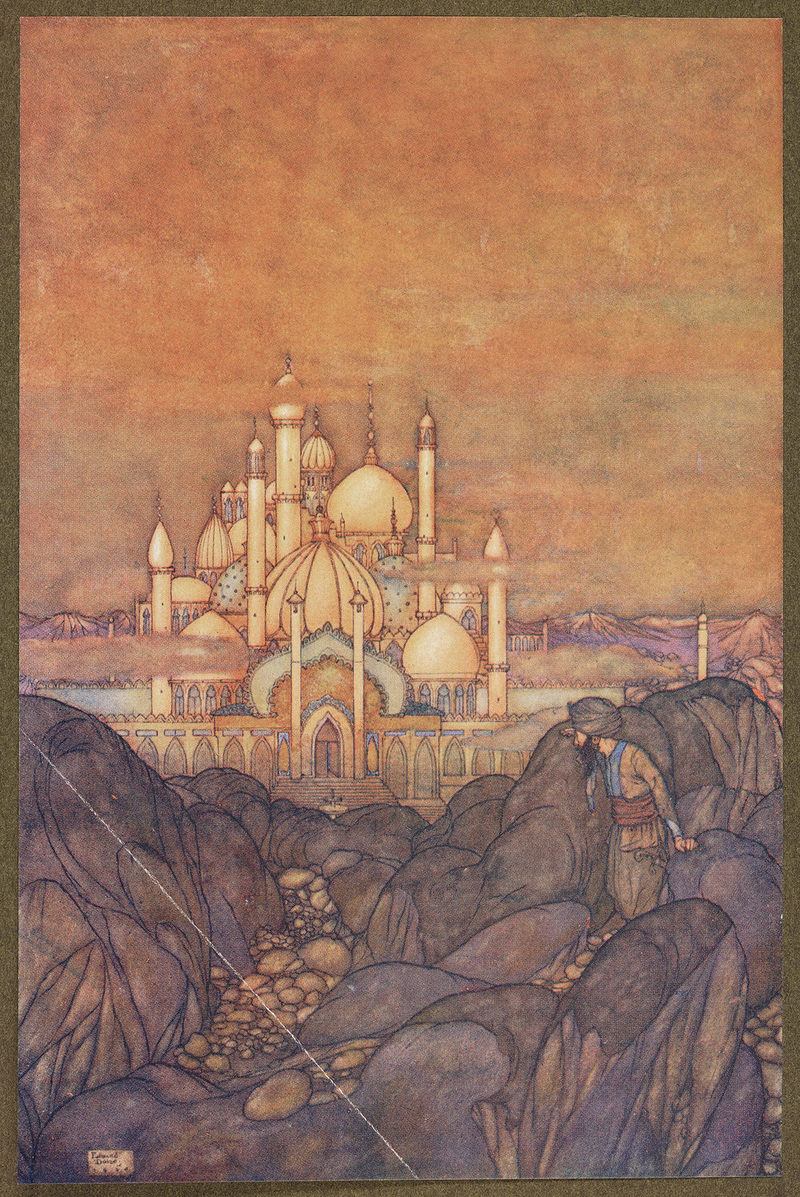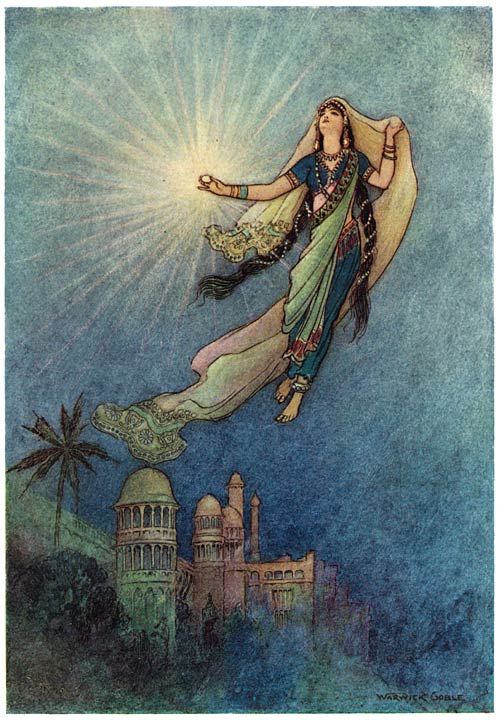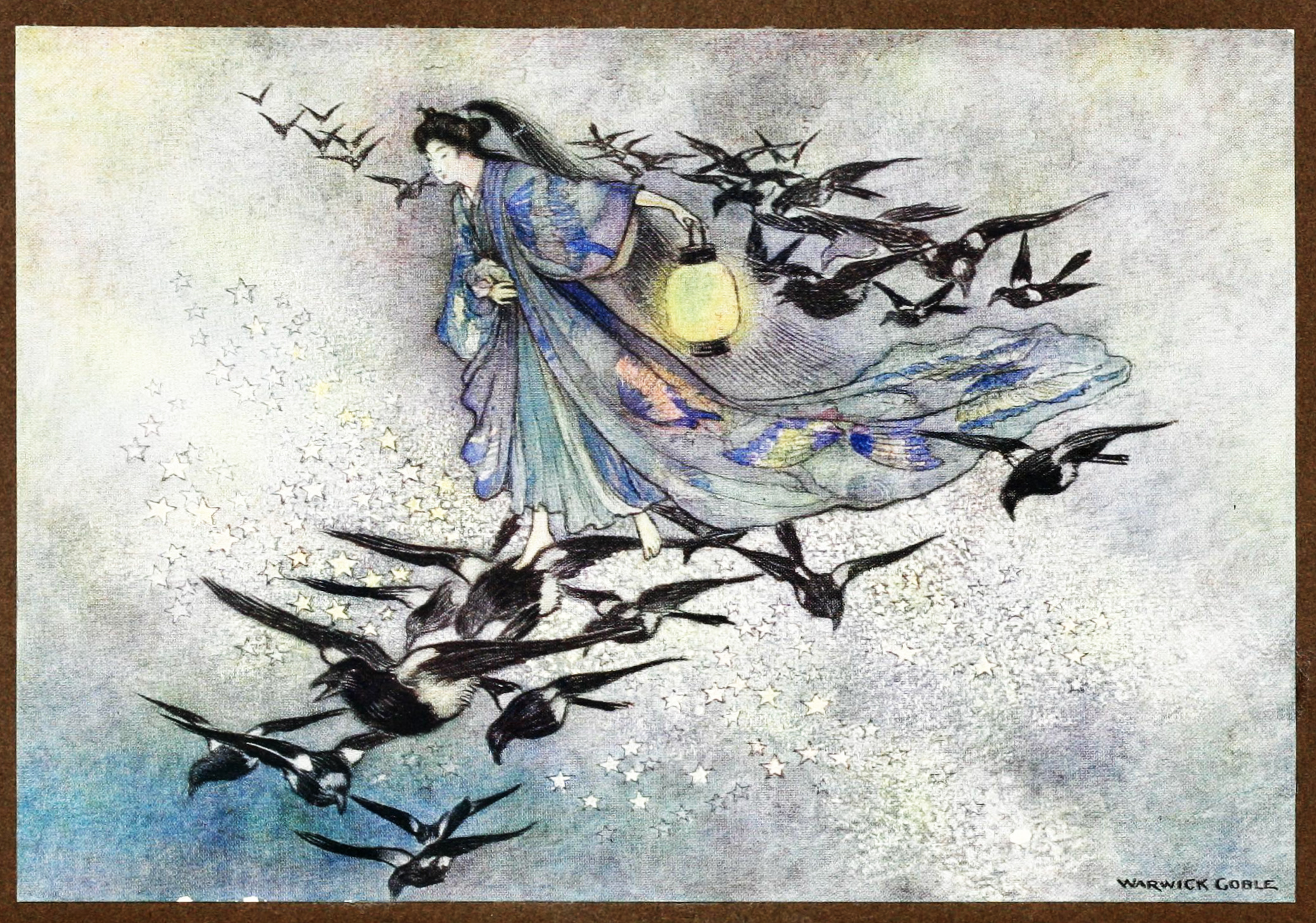25 Forgotten Beauty: The Golden Age of Illustration
Forgotten Beauty: The Golden Age of Illustration
Great illustrators and artists like Henry Justice Ford, Arthur Rackham, Edmund Dulac, Heath Robinson, Evelyn Paul, and Jon Bauer can be explored further through photo-essays and biographical studies. These artists drew upon fairy, epic poems, and folk tales to create fantastical scenes in art.
Edmund Dulac (1882-1953) was a leading illustrator of fairy and folk tales during the 19th and early 20th century. Like Henry Justice Ford, Réne Bull, John Bauer, Evelyne Paul, Viriginia Frances Sterrett, and Arthur Rackham, Dulac is able to create an enchanting and mysterious world that gives new life to the writes’ words. Dulac is well known for his early 20th century illustrations in The Arabian Nights. Also known as The Thousand and One Nights, this popular text in essence, a compilation of Persian, Egyptian, Syrian, and Indian folk tales dating back to the ninth century. The stories are framed by the tale of Shahrazad, the daughter of a vizier who has been married to the homicidal king Shahriyar. Each day he kills a new wife and each night, Shahrazad weaves an intricate spell-binding story so as to save her life…and day by day, the king keeps her alive for yet another story….….. A recent 2021 annotated version of The Arabian Nights: Tales from 1001 Nights by Yasmine Seale and edited by Paulo Lamos Horta addresses the racism and sexism of the original texts and translations, including the 1885 translation by Richard Francis Burton. (Retrieved October 8, 2022 https://www.theguardian.com/books/2021/dec/15/new-arabian-nights-translation-to-strip-away-earlier-versions-racism-and-sexism)
Illustrations by Edmund Dulac from The Arabian Nights

Source: Stories from the Arabian Nights by Laurence Houseman (1865-1969) and illustrated by Edmund Dulac (1882-1953). Hodder & Stoughton, 1907. https://www.gutenberg.org/files/51432/51432-h/51432-h.htm
Project Gutenberg eBook produced by Madeleine Fournier. Images are from The Internet
Archive. Plates are kindly provided by the National Library
of New Zealand.
Scheherazade: Storyteller and Heroine of The Arabian Nights
“Scheherazadè, the heroine of OneThousand and One Nights, ranks among the great story-tellers of the world much as does Penelope among the weavers. Procrastination was the basis of her art; for though the task she accomplished was splendid and memorable, it is rather in the quantity than the quality of her invention—in the long spun-out performance of what could have been done far more shortly—that she becomes a figure of dramatic interest. The idea which binds the stories together is greater and more romantic than the stories themselves; and though, both in the original and in translation, the diurnal interruption of their flow is more and more taken for granted, we are never quite robbed of the sense that it is Scheherazadè who is speaking—Scheherazadè, loquacious and self-possessed, sitting up in bed at the renewed call of dawn to save her neck for the round of another day. Here is a figure of romance worth a dozen of the prolix stories to which it has been made sponsor; and often we may have followed the fortunes of some shoddy hero and heroine chiefly to determine at what possible point of interest the narrator could have left hanging that frail thread on which for another twenty-four hours her life was to depend.” (Preface to Stories from the Arabian Nights retold by Laurence Housman (1865-1959) and illustrated by Edmund Dulac (1882-1953). Garden City Publishing Co. (pp. ix-x), 1907).

For the complete tales of Stories of the Arabian Nights (Housman and Dulac, 1907/1943) , please visit the link below.
https://www.gutenberg.org/files/51432/51432-h/51432-h.htm
“Journeying by night and resting by day, he arrived on the third morning within sight of a palace of shining marble which, with its crowd of domes and minarets, stood solitary among the hills. No sign of life about it, and when he drew near and knocked at the gates none came to answer him. Then, finding the doors unfastened, he took courage and entered; and advancing through chambers where gold lay as dust, and by fountains wherein pearls lay poured out like water, he found only solitude to greet him.”-(Housman, 1907, p. 49).
Edmund Dulac (1882-1953). Illustration. “After these, maidens on white horses, with heads unveiled, bearing in their hands baskets of precious stones.” In Stories from the Arabian Nights retold by Laurence Housman (illustrated by Edmund Dulac). Hodder & Stoughton, 1907 (p.121).

by Edmund Dulac. Illustration (p. 129). Project Gutenberg eBook of Stories from the Arabian Nights retold by Laurence Housman. The Project Gutenberg eBook of Stories from the Arabian Nights, by Laurence Housman.https://www.gutenberg.org/cache/epub/51432/pg51432-images.html
Additional PD Link:
Art Image Painting originally by Edmund Dulac. By National Library NZ on The Commons – https://www.flickr.com/photos/nationallibrarynz_commons/19036114851/, No restrictions, https://commons.wikimedia.org/w/index.php?curid=53534292
Cross -Cultural Fairy and Folk-Tale Books Illustrated by Edmund Dulac (1882-1953).
https://www.gutenberg.org/files/25513/25513-h/25513-h.htm
********************************************************************
Courtesy: Project Gutenberg.
Dulac, E. (1915). Sinbad the Sailor: A Tale from the Thousand and One Nights. Picture Book for the French Red Cross (p. 44). Hodder and Stoughton.
https://www.gutenberg.org/files/45907/45907-h/45907-h.htm
Retrieved October 7, 2022 https://commons.wikimedia.org/wiki/Category:Illustrations_to_the_Arabian_Nights_by_Edmund_Dulac#/media/File:Illustration_by_Edmund_Dulac_from_One_Thousand_and_One_Nights_05.jpg
********************************************************
Additional Sources
The Project Gutenberg eBook of The Arabian Nights: Their Best-known Tales ( retold by Nora Archibald Smith Ed. Kate Douglas Smith Wiggin and illustrated by Maxfield Parrish. Scribners & Sons, 1909). Produced by Irma Pehar, Graeme Mackreth, and the Online Distributed Proofreading Team at http://www.pgdp.net https://www.gutenberg.org/files/20916/20916-h/20916-h.htm
Tanglewood Tales by Nathaniel Hawthorne and Illustrated by Virginia Frances Sterrett:
*****************************************************************************

“She took up the jewel in her hand, left the place, and successfully reached the upper world” (p.22) Tales from Bengal, 1912 retold by Rev. Lal Behari Day (1824-1892).
Courtesy Internet Archive
Project Gutenberg eBook of Folk-Tales from Bengal retold by Lal Behari Day.Produced by Jeroen Hellingman and the Online Distributed Proofreading Team at http://www.pgdp.net/ for Project
Gutenberg. (This file was produced from images generously
made available by The Internet Archive/American Libraries.)
https://ia802605.us.archive.org/34/items/folktalesofbenga00dayluoft/folktalesofbenga00dayluoft.pdf
Courtesy Wikimedia Foundation
http://www.gutenberg.org/files/38488/38488-h/38488-h.htm
For more illustrations by Warwick Goble please open the links below.
https://commons.wikimedia.org/wiki/Category:Illustrations_by_Warwick_Goble
***********************************************************************

Teaching and Learning Resources: Myths and Folktales -International Tales
Internet Archive: Stories of India’s Gods and Heroes. Thomas Crowell Co. 1911. p.. 20. https://ia802601.us.archive.org/10/items/storiesofindiasg00monr/storiesofindiasg00monr.pdf
Folktales illustrated by Evelyne Paul (1883-1963).
https://www.gutenberg.org/files/38895/38895-h/38895-h.htm (Medieval Times)
https://www.gutenberg.org/files/43662/43662-h/43662-h.htm (Egypt)
https://www.gutenberg.org/files/45137/45137-h/45137-h.htm (Assyria)

